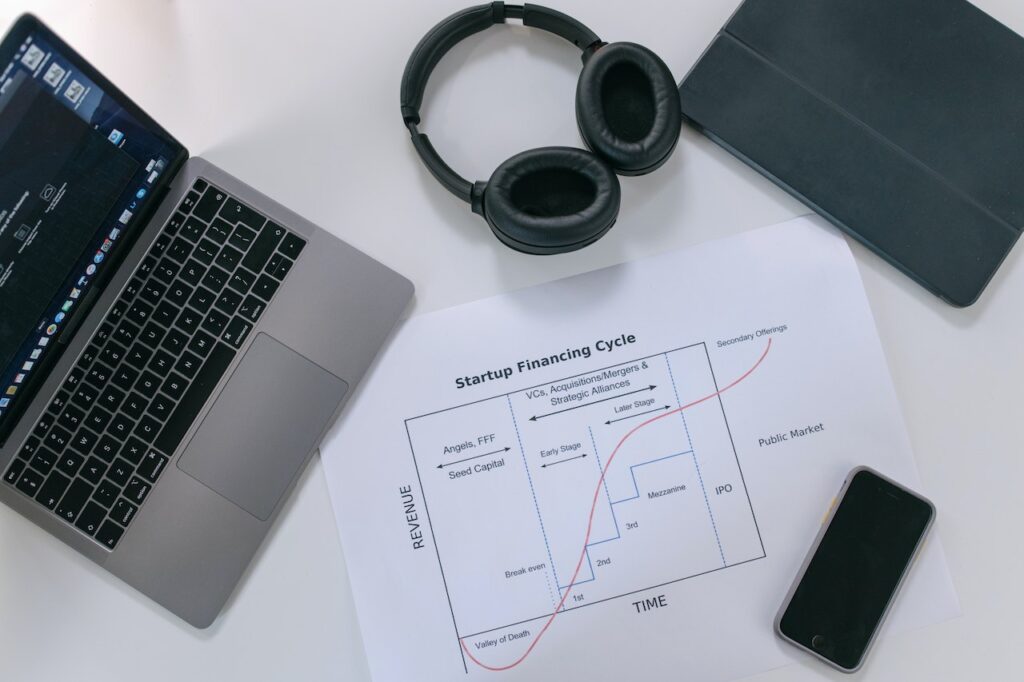Think of influencer marketing as a treasure hunt in the fast-paced digital jungle. What is your ultimate goal? The treasure chest is filled with Return on Investment (ROI). Today, we’re handing you the map – your guide to the influencer marketing ROI benchmarks leading you to marketing victory.
Join us on this exciting journey as we unravel the secrets, break down the numbers, and illuminate the path to influencer marketing success. Let’s dive in and turn your campaigns into ROI success stories!
Introducing ROI Benchmarks for Evaluating Influencer Marketing Campaigns
Return on Investment (ROI) is a fundamental tool for evaluating the success of any marketing campaign. When it comes to influencer marketing, however, measuring ROI can be tricky for influencer marketing companies in India and requires more than just basic metrics like impressions and clicks.
Establishing ROI Benchmarks

To evaluate influencer marketing campaigns effectively, brands need to establish ROI benchmarks. These benchmarks are reference points for assessing campaign success and determining whether the goals have been met.
- Defining Clear Objectives: Before launching a campaign, brands should set specific, measurable, achievable, relevant, and time-bound (SMART) objectives. These objectives could include increasing brand awareness, driving website traffic, or boosting product sales.
- Determining Key Performance Indicators (KPIs): Identify the key metrics that align with campaign objectives. Common KPIs in influencer marketing include engagement rate, click-through rate, conversion rate, and social media reach.
- Calculating Baseline Metrics: Before the campaign starts, calculate baseline metrics based on historical data or industry averages. These metrics serve as a starting point for measuring campaign impact.
Implementing ROI Measurement
With defined objectives and KPIs, brands can implement ROI measurement strategies during and after influencer campaigns.
- Tracking Data in Real-Time: Utilize analytics tools to monitor real-time campaign performance. Track metrics such as reach, engagement, and conversions as the campaign unfolds.
- Attribution Modeling: Implement attribution modeling to understand the contribution of each influencer to the overall campaign ROI. This helps determine which influencers are driving the most value.
- Cost Analysis: Calculate the total cost of the influencer campaign, including influencer fees, content creation costs, and promotional expenses.
- Revenue Generation: Measure the revenue generated directly from the campaign. This may involve tracking e-commerce sales, lead generation, or other conversion actions.
Evaluating ROI Benchmarks
Once the campaign is complete, it’s time to evaluate the ROI benchmarks against the results.
Comparison to Baseline Metrics: Compare the final campaign metrics to the baseline metrics established before the campaign. This comparison indicates the campaign’s impact.
- ROI Calculation:
Calculate the ROI using the formula:
ROI (%) = [(Revenue – Cost) / Cost] x 100
A positive ROI indicates a profitable campaign, while a negative ROI suggests that the campaign did not generate enough revenue to cover its costs.
- Assessing Influencer Performance: Evaluate the performance of each influencer by reviewing their contribution to the campaign’s objectives. Determine which influencers delivered the best ROI.
Benefits of ROI Benchmarks
Establishing and utilizing ROI benchmarks in influencer marketing offers several advantages:
- Data-Driven Decision-Making: Brands can make informed decisions based on concrete data, optimizing future campaigns for better results.
- Budget Allocation: ROI benchmarks help allocate marketing budgets more effectively, focusing resources on strategies and influencers that deliver the highest ROI.
- Improved Campaign Performance: By analyzing ROI, brands can identify areas for improvement and refine their influencer marketing strategies.
Understanding the Basics of Return on Investment (ROI)

ROI is a financial ratio measuring the profit or loss from an investment relative to its cost. It provides a percentage-based assessment of the return on investment about the early investment amount.
18% of marketers claim that social media channels are highly effective, and 60% agree that influencer marketing has a higher ROI than traditional advertising.
The ROI Formula
The formula to calculate ROI is relatively straightforward:
ROI (%) = [(Net Profit / Cost of Investment) x 100]
Net Profit: This refers to the total earnings or returns generated from the investment.
Cost of Investment: This represents the initial money invested or spent.
Positive vs. Negative ROI
Understanding whether ROI is positive or negative is crucial:
- Positive ROI: A positive ROI indicates that the return on the investment is higher than the initial cost. This implies that the investment has generated a profit.
- Negative ROI: A negative ROI suggests that the return on the investment is lower than the initial cost. This means that the investment has incurred a loss.
The Significance of ROI
ROI serves several essential purposes:
- Performance Evaluation: ROI allows individuals and businesses to assess the performance of investments and financial decisions. It answers the question, “Was the investment worthwhile?”
- Comparative Analysis: ROI enables comparisons between different investment opportunities. It helps individuals and organizations choose investments with the highest potential for returns.
- Budget Allocation: ROI helps allocate resources and budgets effectively. It guides decision-makers in determining where to allocate funds for maximum profitability.
- Risk Assessment: By analyzing ROI, individuals and businesses can evaluate the potential risks associated with an investment. Lower ROI may indicate higher risk.
Variations of ROI
Several variations of ROI exist, tailored to specific financial contexts. Some common types include:
- Return on Marketing Investment (ROMI): ROMI assesses the effectiveness of marketing campaigns by measuring the return generated relative to marketing expenditures.
- Return on Equity (ROE): ROE evaluates a company’s profitability by measuring the return generated for shareholders’ equity.
- Return on Assets (ROA): ROA assesses how efficiently a company utilizes its assets to generate earnings.
- Return on Investment in Real Estate (ROIRE): ROIRE is used to evaluate the profitability of real estate investments, factoring in rental income, expenses, and property value appreciation.
Limitations of ROI
While ROI is a valuable metric, it has limitations:
- Timeframe Dependency: ROI calculations are sensitive to the timeframe considered. Short-term ROI may not accurately reflect long-term profitability.
- Omission of Opportunity Costs: ROI often doesn’t account for the opportunity cost of choosing one investment over another.
- Lack of Risk Assessment: ROI does not inherently consider the risks associated with an investment, making it important to assess risk separately.
Establishing Your Goals and Objectives

Before launching an influencer marketing campaign, having clear goals and objectives is important. This will help ensure your efforts are focused and effective, resulting in higher ROI.
- Increase Awareness: Creating awareness of your brand is one of the main goals of influencer marketing and can be achieved by increasing exposure on social media, growing an engaged audience, and driving website traffic.
- Generate Leads: Influencers can help you reach potential customers who may not have previously known about your product or services. This can result in more leads for your business.
- Build Brand Loyalty: Influencers can help you create a more positive view of your brand by providing engaging content and building relationships with their followers.
- Drive Conversions: By targeting the right influencers, you can increase the chances of conversions–sales or sign-ups to your website.
- Increase Engagement: The more people interact with your content, the more successful your campaigns become. Influencers can help spread your message and generate higher engagement rates.
Objectives
- Choose the right influencers for your campaign: You’ll want to select influencers with an engaged following that aligns with your brand values.
- Monitor performance: Track the metrics and examine the results of individual campaigns to determine their progress and identify areas for improvement.
- Establish a positive relationship with influencers: Building relationships with influencers is key to long-term success.
- Stay within budget: Ensure you’re not overspending on campaigns–you want to maximize ROI while keeping costs low.
- Measure ROI: Establishing your own set of ROI benchmarks will help you measure the effectiveness of your influencer marketing campaigns and understand their true value for your brand.
Calculating the Cost-Per-Impression (CPI)
The Cost-Per-Impression (CPI) is a metric that helps marketers, including influencer marketing companies in India, measure the efficiency of influencer marketing campaigns. Understanding this metric is important to accurately calculate ROI for your campaigns and ensure they are cost-effective.
To calculate CPI, you first need to determine the total cost of your campaign. This includes any fees you paid for Influencers’ fees: Payment for the sponsored content and any additional expenses incurred during the campaign.
Platform costs: There may be fees to use certain platforms or features, such as analytics tools.
Paid media spend: This covers any amount you spend on paid campaigns to promote your influencer marketing efforts, such as boosting posts.
Once you have the total cost, divide it by the impressions your campaign generated. This will give you a CPI figure that can be used to measure ROI for future campaigns.
For example, if you spent $2,000 on an influencer marketing campaign and received 10,000 impressions, your CPI would be $0.20.
This metric is one of the most important factors to consider when evaluating influencer marketing ROI, as it helps you understand how cost-effective your efforts are. By tracking CPI, you can ensure that your budget is best spent on campaigns that generate maximum value and engagement.
Maximizing Engagement and Impact with Influencers

Engagement is an important metric to measure when evaluating influencer marketing campaigns, as it helps you understand your efforts’ success. To maximize engagement and impact with influencers, you should take several key steps:
- Identify the right influencers: Find influencers whose content and audience align with your brand values, as their followers are more likely to engage with your campaigns.
- Be specific in objectives: Set clear goals and objectives for each campaign to ensure that you’re targeting the right people and generating desired results.
- Analyze engagement data: Monitor metrics such as likes, comments, and shares to gain insights into your campaigns’ performance.
- Keep content relevant: Create content relevant to the influencer’s niche and their followers’ interests.
- Encourage user-generated content: Ask influencers to encourage their followers to create content around your campaign or product, such as reviews or photos.
- Offer incentives: Offering exclusive discounts, free products, or other rewards can help increase engagement with your campaign.
- Leverage multiple channels: Promote your campaigns through multiple channels, such as social media and email, to ensure maximum reach.
- Track performance: Use tracking links to monitor clicks and conversions and better understand your campaigns’
- Analyze ROI: Make sure to measure the success of your campaigns by tracking ROI metrics such as impressions, reach, and engagement.
- Do A/B testing: Test different versions of your content or messaging to see which drives better results.
- Respond to comments and feedback: Allocate time for engaging with comments and answering questions from your followers.
Analyzing Metrics to Determine Success
Analyzing metrics is key to understanding the success of your influencer marketing campaigns. With the right data, you can make informed decisions about future efforts and measure ROI more accurately.
The key metrics will depend on your business goals, but some of the most important ones to measure include
- Reach: This metric tells you how many people have seen or been exposed to your content.
- Engagement: This includes the likes, comments, shares, and other interactions on your posts.
- Conversions: This metric measures how many people have taken a desired action, like signing up for an email list or buying a product.
- Click-throughs: Track the number of clicks on links within your posts to measure their effectiveness.
- Cost-per-impression (CPI): This metric helps you understand the cost efficiency of your campaigns.
Analyzing these metrics will help you, including influencer marketing services in India, better understand your campaigns’ success and what areas need upgrading for future efforts. Tracking data over time is important to identify trends and adjust your strategy accordingly. You can optimize your influencer marketing campaigns for maximum ROI with the right metrics.
Conclusion
Influencer marketing has succeeded in reaching a broader audience, engaging with existing customers, and growing brand awareness. By following the best practices outlined above and analyzing your campaigns’ data, you can maximize your ROI and ensure each campaign succeeds. Influencer marketing can help drive measurable results for your business with the right strategy.
FAQs
Q: What is the best way to measure ROI for influencer marketing campaigns?
The best way to measure ROI for influencer marketing campaigns is to track metrics such as reach, engagement, conversions, click-throughs, and cost-per-impression (CPI). Analyzing these metrics will assist you in understanding your campaigns’ success and making informed decisions on future efforts.
Q: How do I maximize impact and engagement with influencers?
To maximize impact and engagement with influencers, you should identify the right influencers whose content and audience align with your brand values, set clear objectives for each campaign, keep content relevant to followers’ interests, encourage user-generated content, offer incentives, leverage multiple channels, track performance, analyze ROI, do A/B testing and respond to comments and feedback.
Q: What key steps to take when evaluating influencer marketing campaigns?
Key steps for evaluating influencer marketing campaigns include identifying the right influencers, setting specific objectives, analyzing engagement data, keeping content relevant, encouraging user-generated content, offering incentives, leveraging multiple channels, tracking performance, analyzing ROI, doing A/B testing, and responding to comments and feedback.
Q: How do I optimize my influencer marketing campaigns for maximum ROI?
To optimize your influencer marketing campaigns for maximum ROI, you should track metrics such as reach, engagement, conversions, click-throughs, and cost-per-impression (CPI). Analyzing these metrics will assist you in identifying trends and making informed decisions on future efforts.




